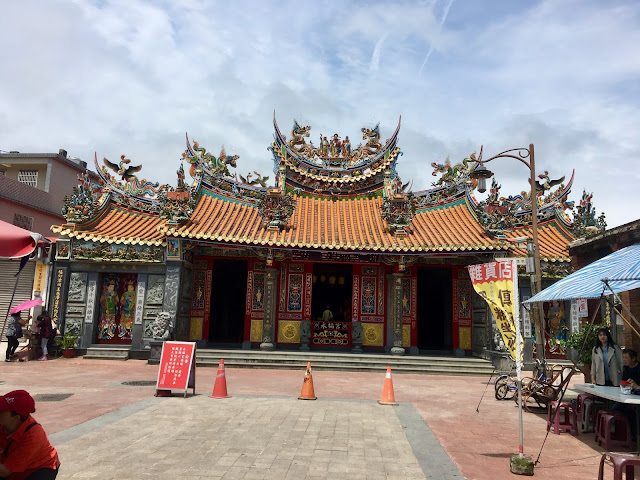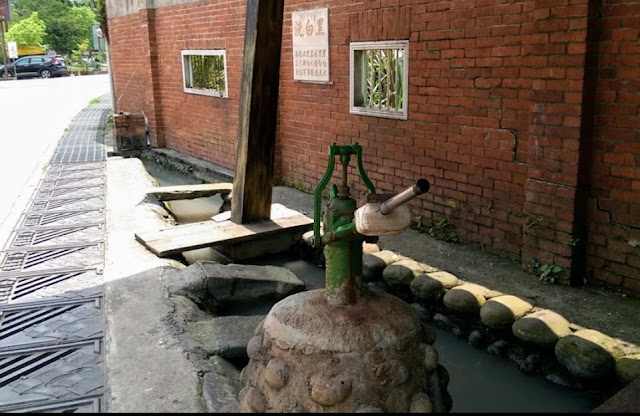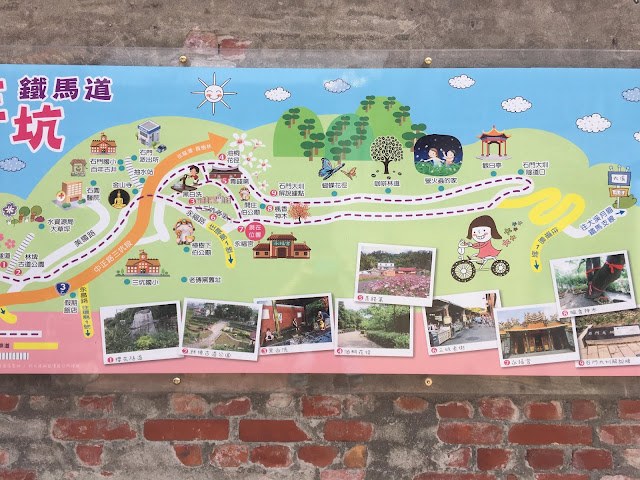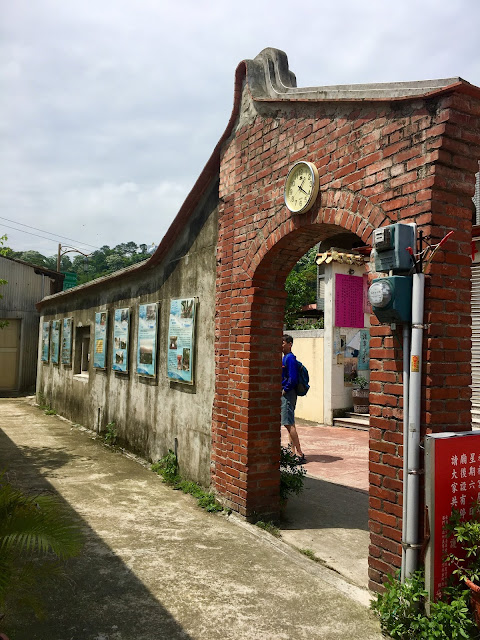We visited Sankeng in Taoyuan, where we were delighted to see the beautiful tung flowers in full bloom. The surrounding hills were adorned with white flowers, creating a picturesque landscape. The Tung Blossom Trail is just a short walk away from Sankeng Old Street. Although the old street was not very crowded, it served as a starting point for people who wanted to bike along the mountain trail. Thanks to the clean water in the area, it was also possible to spot fireflies during this season.
The natural beauty of Taiwan is truly remarkable, with blooming flowers to be found throughout the year. Currently, in April and May, it is the season of the tung flowers and the Tung Blossom Festival. Tung trees, also known as tung oil trees or China wood-oil trees, were originally cultivated in China's Yangtze River region and were introduced to Taiwan during the Japanese occupation. The largest concentration of tung trees can be found in northern Taiwan, particularly in Miaoli, Hsinchu, and Taoyuan, where they were planted by Hakka people.
For updates about tung blossom check: https://tung.hakka.gov.tw/EN/0000028.html
Tung trees are deciduous and can reach heights of up to 20 meters. Their flowers, which bloom before the leaves, have white petals with hints of pink or purple. Tung trees bear hard pear-shaped fruits containing oily seeds. It's important to note that all parts of the tung tree are poisonous, including the leaves, which can cause a rash similar to poison ivy.
Tung wood is commonly used in the production of furniture, clogs, toothpicks, matches, and other items. The seeds of the tung tree are used to extract tung oil, which has traditionally been used in lamps and also serves as an ingredient in paint, varnish, and caulk. Tung oil is known for its ability to protect wood furniture and make it waterproof. The use of tung oil dates back to approximately 400 BC and was mentioned in the writings of Confucius. While the demand for tung oil has declined, it still holds significance in Hakka culture.
The Hakka Tung Blossom Festival was first established in 2002 to promote Hakka culture. Every April and May, many people flock to the mountains to enjoy the breathtaking view of the blooming flowers. As the flowers fall from the trees, it creates a magical atmosphere akin to falling snow. Some people even gather the fallen flowers to create shapes like hearts.
When I first saw pictures of the tung trees from afar a year ago, I didn't imagine that I would be captivated enough to visit the mountains to see them in person. However, after exploring various locations with different types of flowers, my interest in witnessing the beauty of the blooming tung trees was piqued.
Sankeng Old Street (三坑老街)
Sankeng Old Street (三坑老街) is situated in Taoyuan's Longtan District. It is considered a traditional Hakka settlement, and the earliest development of the Longtan District is associated with an area known as "Longtan First Street." The old street is characterized by its narrow layout. Sankeng's origin can be traced back to the reign of Emperor Kangxi during the Qing Dynasty, and it became a settlement when people migrated to the area in 1744. The topography of the area features three rivers merging into the Dahan River, which created three pits on the land, giving Sankeng its name. With its favorable location for water transportation, Sankeng prospered as a transit station for goods traveling between Longtan and Yangmei. However, due to the construction of Dazhen, railways, and the Shimen Reservoir, the water level of the Dahan River was reduced, resulting in the cessation of water transport and subsequent restrictions on construction in the area. As a result, Sankeng was unable to undergo significant rebuilding for many years, but it managed to retain its original charm.
At the entrance of Sankeng Old Street, you can find the "Black and White Wash" (黑白洗), which was historically used by early residents as a place to wash their clothes. The water for washing comes from the Shihmen Reservoir and can be regulated by wooden blocks. A water pump was recently reconstructed in the area. This traditional Hakka settlement was registered as a historic building in Taoyuan City in 2003.
One notable site along Sankeng Old Street is the Yongfu Palace (龍潭三坑仔永福宮). Originally dedicated to the King of Sanshan, it serves as the center of local faith. Over time, it underwent changes and currently enshrines the Three Officials, the Holy King, Wenchang Emperor, and other deities. The temple was initially built in 1791 and was relocated to its current location in 1924.
See also: Daxi Old Street





















0 komentarze:
Post a Comment